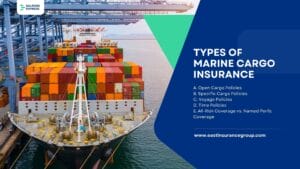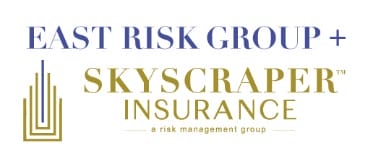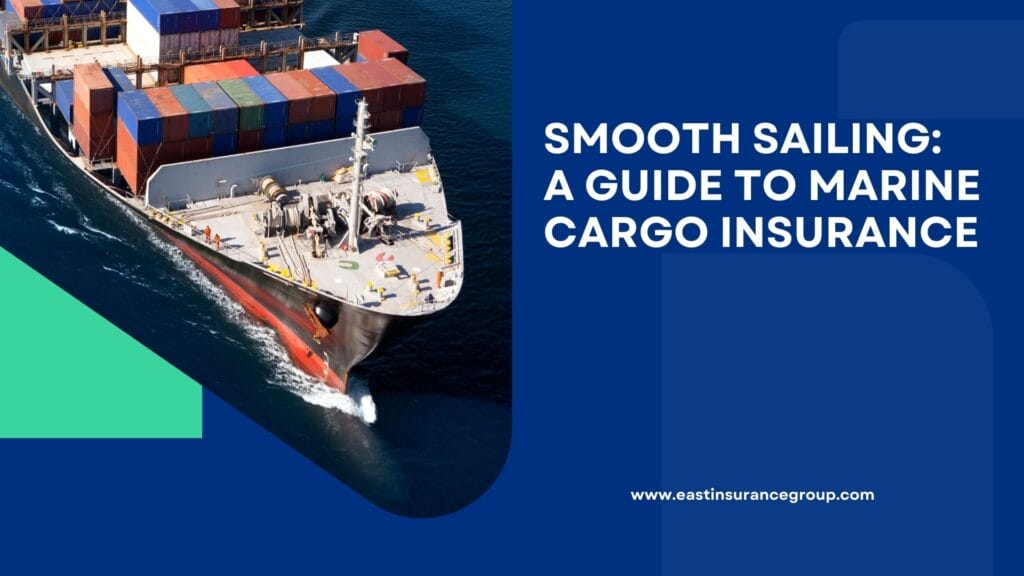Introduction
A. Overview of Marine Cargo Insurance
Marine Cargo Insurance is a specialized type of insurance that provides coverage for goods and merchandise transported across various modes of transportation, including sea, air, and land. This insurance is designed to protect businesses from financial losses incurred due to damage, loss, or theft of goods during transit. It plays a crucial role in mitigating the risks associated with the transportation of goods, offering a safety net for businesses engaged in international trade and logistics.
B. Importance of Marine Cargo Insurance for Businesses
Risk Mitigation:
Safeguards businesses against potential financial losses arising from risks such as damage to cargo, theft, and other perils during transit.
Provides a safety net for unpredictable events that can impact the integrity and condition of goods in transit.
Supply Chain Resilience:
Enhances the resilience of the supply chain by addressing potential disruptions that could impact the timely delivery of goods.
Ensures that businesses can maintain continuity in their operations even in the face of unforeseen events affecting cargo shipments.
Financial Protection:
Offers financial protection to businesses by covering the cost of damaged or lost goods, helping to mitigate the impact on the bottom line.
Provides coverage for both domestic and international shipments, offering a comprehensive solution for businesses involved in global trade.
Contractual and Regulatory Compliance:
Meets contractual obligations by ensuring that businesses comply with shipping and trade agreements that may require insurance coverage.
Aligns with regulatory requirements, offering businesses the necessary coverage to meet legal and industry standards.
Peace of Mind:
Provides businesses with peace of mind, allowing them to focus on core operations without constant concern about the potential risks associated with the transportation of goods.
Facilitates confidence in dealing with international trade, knowing that financial protection is in place for unforeseen events.
In summary, Marine Cargo Insurance is a fundamental tool for businesses engaged in the movement of goods, offering financial protection, supply chain resilience, and peace of mind in the dynamic and often unpredictable world of global trade and logistics.
Understanding the Risks
A. Types of Risks in Maritime Transportation:
- Physical Damage to Cargo:
a. Causes: Damage can result from accidents, rough handling, improper stowage, or natural disasters during transit.
b. Insurance Coverage: Marine Cargo Insurance typically covers physical damage to goods caused by external factors. - Theft and Pilferage:
a. Causes: Theft and pilferage can occur during loading, unloading, or while goods are in transit, especially in areas with higher security risks.
b. Insurance Coverage: Marine Cargo Insurance helps protect against losses due to theft and pilferage, providing financial compensation for the value of the stolen goods. - General Average:
a. Definition: A legal principle where all parties involved in a sea voyage proportionally share the losses resulting from intentional sacrifices made to safeguard the vessel and its cargo.
b. Insurance Coverage: Marine Cargo Insurance may cover the insured’s contribution to a general average, ensuring financial protection in such scenarios. - Delayed Shipments and Loss of Profits:
a. Causes: Delays in shipment due to unforeseen circumstances can result in financial losses, including additional storage costs and loss of business opportunities.
b. Insurance Coverage: Marine Delay in Start-Up (DSU) or Loss of Profits Insurance may provide coverage for financial losses resulting from delayed shipments.
B. Impact of Risks on Businesses:
- Financial Losses
- Direct Costs: Expenses related to the replacement or repair of damaged goods.
- Indirect Costs: Additional expenses incurred during the interruption, such as storage costs, expedited shipping, and increased handling expenses.
- Supply Chain Disruptions
- Inventory Issues: Disruptions can lead to shortages in inventory, affecting production schedules and distribution.
- Supplier and Customer Relations: Delays in shipments may strain relationships with suppliers and customers, impacting long-term business partnerships.
- Reputational Damage:
- Customer Perception: Delays, damaged goods, or supply chain interruptions can harm a company’s reputation among customers.
- Market Competitiveness: Reputational damage may result in the loss of market share to competitors with more reliable supply chains.
Understanding these risks is essential for businesses to develop effective risk mitigation strategies, including the proper selection and utilization of Marine Cargo Insurance to safeguard against potential financial losses and maintain the integrity of the supply chain.
Types of Marine Cargo Insurance

A. Open Cargo Policies:
Definition: Open Cargo Policies provide continuous coverage for an indefinite number of shipments within a specified period.
Flexibility: Businesses with frequent shipments benefit from the flexibility of an open cargo policy, as it eliminates the need to obtain separate insurance for each shipment.
Continuous Coverage: The policy remains in force, and coverage automatically extends to new shipments, offering convenience and streamlined administration.
B. Specific Cargo Policies:
Definition: Specific Cargo Policies provide coverage for a single shipment or a series of identified shipments.
Tailored Coverage: These policies are tailored to the specific characteristics and value of the cargo being transported.
Limited Duration: Coverage applies only to the specified shipment(s), making it suitable for businesses with infrequent or irregular shipping activities.
C. Voyage Policies:
Definition: Voyage Policies provide coverage for a single journey or voyage from the point of origin to the final destination.
Duration of Coverage: Coverage is limited to the duration of the specific voyage, providing protection for the cargo during its transit.
Suitability for Single Trips: Ideal for businesses involved in occasional or one-time shipments, such as unique export opportunities.
D. Time Policies:
Definition: Time Policies, also known as time and voyage policies, offer continuous coverage for a specified period, regardless of the number of shipments.
Coverage Period: The policy remains in force for a predetermined time, providing flexibility for businesses with regular but unpredictable shipping schedules.
Balanced Flexibility: Combines the flexibility of open cargo policies with the time-specific coverage of voyage policies.
E. All-Risk Coverage vs. Named Perils Coverage:
All-Risk Coverage:
Definition: All-Risk Coverage provides broad protection, covering all perils unless explicitly excluded in the policy.
Comprehensive Protection: Offers a comprehensive solution, protecting against a wide range of risks and events.
Suitability: Ideal for businesses seeking extensive coverage and protection against unforeseen events.
Named Perils Coverage:
Definition: Named Perils Coverage specifies the particular risks or perils that are covered under the policy.
Selective Coverage: Coverage is limited to the risks explicitly listed in the policy, offering a more selective approach.
Cost Efficiency: Businesses may choose named perils coverage when looking to lower premiums and focus on specific risks relevant to their cargo.
Understanding the characteristics and advantages of these types of marine cargo insurance policies enables businesses to choose the most appropriate coverage based on their shipping patterns, risk tolerance, and specific needs.
Coverage Limits and Exclusions
A. Determining Coverage Limits
- Assessment of Cargo Value:
- The coverage limit is often determined based on the assessed value of the cargo being transported.
Businesses need to accurately declare the value of the cargo to ensure adequate coverage.
- The coverage limit is often determined based on the assessed value of the cargo being transported.
- Consideration of Additional Costs:
- Coverage limits should account for potential additional costs, including shipping fees, customs duties, and other related expenses.
Adequate coverage helps mitigate the risk of being underinsured in the event of a loss.
- Coverage limits should account for potential additional costs, including shipping fees, customs duties, and other related expenses.
B. Common Exclusions in Marine Cargo Insurance
- Inherent Vice:
- Definition: Refers to the natural characteristics or qualities of the cargo that make it susceptible to damage or deterioration.
- Exclusion Rationale: Insurance typically excludes coverage for damage resulting from the inherent nature of the cargo, as it is considered beyond the control of the carrier.
- Insufficiency of Packing:
- Definition: Excludes coverage for damage caused by inadequate or improper packing of the goods.
- Importance of Proper Packing: Businesses are responsible for ensuring that cargo is appropriately packed to withstand the rigors of transportation.
- Delay, Loss of Market, and Consequential Loss:
- Definition: Excludes coverage for indirect or consequential losses resulting from delays, such as loss of market share, business opportunities, or profits.
- Focus on Direct Losses: Marine cargo insurance typically covers direct losses to the cargo itself rather than indirect financial losses.
- Unseaworthiness of Vessel:
- Definition: Excludes coverage for losses resulting from the vessel being unseaworthy at the time of departure.
- Importance of Vessel Inspection: Businesses should ensure that the vessels carrying their cargo are seaworthy to avoid this exclusion.
Understanding these common exclusions is crucial for businesses to manage expectations regarding the scope of coverage provided by marine cargo insurance. Additionally, it emphasizes the importance of proper packing, accurate cargo valuation, and compliance with shipping standards to ensure that coverage limits are adequate and potential claims are not excluded due to preventable factors.
Selecting the Right Marine Cargo Insurance
A. Assessing Cargo Characteristics and Transportation Methods
- Cargo Type: Different types of cargo have varying susceptibility to risks. Assess the nature, fragility, and value of the cargo to determine appropriate coverage. Perishable goods may require specific coverage, while durable goods may have different risk profiles.
- Transportation Route and Mode: Evaluate the transportation route and mode (sea, air, land) to understand specific risks associated with each. Consider the potential exposure to environmental factors, theft, and other perils based on the chosen transportation method.
- Transshipment Points: Identify transshipment points and assess the risks associated with cargo handling and transfers. Coverage should address the specific challenges posed by transshipment to ensure comprehensive protection.
B. Evaluating the Need for Additional Coverages
- Warehouse Coverage: Assess whether additional coverage is needed for goods stored in warehouses during transit. Warehouse coverage can protect against risks such as fire, theft, or damage during storage.
- Transit Storage Coverage: Consider coverage extensions for goods stored during transit. This coverage is essential when cargo is temporarily stored at intermediate points during transportation.
- Political Risk Coverage: Evaluate the need for coverage against political risks, especially when shipping to regions with geopolitical instability. Political risk coverage can include protection against confiscation, expropriation, or political violence.
- Natural Catastrophe Coverage: Assess the risk of natural disasters along the transportation route. Additional coverage for natural catastrophes such as earthquakes or hurricanes may be necessary.
C. Considering the Reputation of Insurance Providers:
- Financial Stability: Choose insurance providers with strong financial stability to ensure their ability to fulfill claims. Review the insurer’s financial ratings and reputation within the industry.
- Claims Handling Reputation: Investigate the insurer’s reputation for fair and timely claims handling. Efficient claims processing is crucial for businesses to recover losses promptly.
- Industry Expertise: Select insurance providers with expertise in marine cargo insurance and a deep understanding of the challenges specific to the industry. Industry knowledge enhances the ability to tailor coverage to the unique needs of businesses.
- Client References: Seek client references or reviews to gauge the satisfaction of other businesses with the insurer’s services. Positive feedback from clients can provide confidence in the insurer’s reliability.
Selecting the right marine cargo insurance involves a comprehensive assessment of cargo characteristics, transportation methods, the need for additional coverages, and the reputation of insurance providers. A well-informed decision ensures that businesses are adequately protected against the specific risks associated with the transportation of goods.
Filing a Claim and the Claims Process
A. Notifying the Insurer
- Prompt Notification:
- Notify the insurer as soon as possible after the occurrence of an event leading to a potential loss.
Prompt notification is essential to initiate the claims process and ensure timely assessment. - Providing Key Information: Include essential information in the notification, such as policy details, description of the event, and preliminary assessment of the loss.
- Clear and detailed information helps the insurer initiate the claims handling process efficiently.
B. Documenting the Loss
- Cargo Inspection: Conduct a thorough inspection of the damaged or lost cargo.
Document the condition of the cargo, noting any visible damage or discrepancies. - Photographic Evidence: Take photographs of the damaged goods, packaging, and any relevant shipping documentation.
Visual documentation serves as crucial evidence during the claims process. - Maintaining Records: Keep detailed records of the shipment, including invoices, packing lists, bills of lading, and any other relevant documents.
Accurate documentation facilitates the assessment of the loss and supports the validity of the claim.
C. Investigation and Assessment
- Insurer’s Investigation: The insurer conducts an investigation to assess the circumstances and causes of the loss.
May involve site visits, interviews, and coordination with relevant parties, such as carriers and surveyors. - Surveyor’s Report: If necessary, an independent surveyor may assess the damage and provide a detailed report. The surveyor’s findings contribute to the insurer’s overall assessment of the claim.
- Determining Coverage: The insurer reviews the policy terms and conditions to determine the extent of coverage. Factors such as policy limits, exclusions, and the cause of loss are considered in this assessment.
D. Claim Settlement Process
- Negotiation and Agreement: Following the assessment, the insurer and the insured may enter into negotiations to agree on the settlement amount.
Clear communication and transparency are essential during this process. - Payment of Settlement: Once an agreement is reached, the insurer disburses the settlement amount to the insured.
Settlement may cover the repair or replacement cost of damaged goods, additional expenses, or other covered losses. - Claims Closure: With the settlement paid, the claims process concludes, and the claim is marked as closed.
Both parties should maintain records of the claim and settlement for future reference.
Navigating the claims process efficiently involves timely notification, thorough documentation, collaborative investigation, and transparent negotiation. Businesses and insurers working together can ensure a smoother and more effective resolution of claims related to marine cargo insurance.
Conclusion
A. Recap of Key Points
Diverse Coverage Options:
- Marine cargo insurance offers various coverage options, including open cargo policies, specific cargo policies, voyage policies, and time policies.
- Businesses can choose coverage based on their shipping patterns, cargo characteristics, and risk tolerance.
- Common Exclusions: Understanding common exclusions, such as inherent vice, insufficiency of packing, and delay-related losses, is crucial for managing expectations regarding coverage.
Claims Process:
- The claims process involves prompt notification, thorough documentation, an investigation by the insurer, and a negotiated settlement.
- Effective communication and collaboration between businesses and insurers are key to a successful claims resolution.
- Risk Mitigation Strategies: Assessing cargo characteristics, evaluating additional coverage needs, and considering the reputation of insurance providers are integral to selecting the right marine cargo insurance.
- Proper risk mitigation strategies contribute to smoother operations and increased resilience in the face of unforeseen events.
B. Emphasizing the Role of Marine Cargo Insurance in Ensuring Smooth Sailing for Businesses:
Financial Protection:
- Marine cargo insurance provides financial protection against the risks associated with the transportation of goods, including damage, theft, and other perils.
- Supply Chain Resilience: By mitigating the impact of disruptions, marine cargo insurance enhances the resilience of supply chains, ensuring the timely delivery of goods.
- Customized Coverage: The availability of various policy types allows businesses to customize coverage based on their specific needs, cargo types, and transportation methods.
- Risk Management Tool: Marine cargo insurance serves as a vital risk management tool, helping businesses navigate the complexities of global trade and logistics.
- Peace of Mind: Knowing that goods are protected during transit provides businesses with peace of mind, allowing them to focus on core operations and strategic growth.
In conclusion, marine cargo insurance plays a pivotal role in safeguarding businesses engaged in the transportation of goods. The diverse coverage options, effective risk mitigation strategies, and the claims process contribute to ensuring smooth sailing for businesses, even in the face of unexpected challenges in the dynamic world of international trade and logistics.

